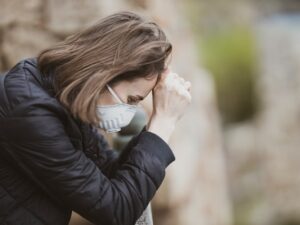
Are bird droppings a problem in the workplace?
Besides the harm some wild urban bird species, mostly feral pigeons, cause to buildings by their activity and nesting sites, their droppings can be the source of a cocktail of bacterial and fungal spores. Microorganisms pathogenic to people have been found in bird droppings, for example:
- Histoplasma capsulatum
- Cryptococcosis neoformans
- Chlamydia psittaci
Bird droppings in the workplace are often overlooked, yet are the breeding grounds for bacterial and fungal spores. Histoplasma capsulatum, Cryptococcosis neoformans, Chlamydia psittaci and fungal spores are classified as Hazardous Biological Agents in the Occupational Health and Safety Act.
Exposure to Hazardous Biological Agents occurs when the bacterial and fungal spores have grown on the bird droppings. Once the droppings have dried, they can become airborne in the form of dust particles. The dust particles become airborne because of wind or other methods of disturbing the surface (i.e., people walking past, scraping or sweeping the droppings etc). The dust particles thus become the vehicle to transport the bacterial and fungal spores. The dust particles containing bacterial and fungal spores (further referred to as airborne bird dropping dust) might then be inhaled by persons or employees walking, scraping and sweeping surfaces covered with bird droppings.
What are the health effects associated with exposure to bird droppings?
The illness caused by exposure to Histoplasma capsulatum is called Histoplasmosis and the signs and symptoms include:
- Tiredness
- High fever
- Chills
- Headache
- Muscle aches
- Feeling of weakness
- Chest pain
- Diarrhoea
- Vomiting
- Enlarged liver
- Enlarged spleen
The illness caused by exposure to Cryptococcosis neoformans is called Cryptococcis and the signs and symptoms include:
- Fever
- Tiredness
- Headache
- Lung infection
- Kidney infection
- Prostate infection
- Bone infection
- Meningitis
The illness caused by exposure to Chlamydia psittaci is called Paittacosis and the signs and symptoms include:
- Fever
- Headache
- Chills
- Muscle pain
- Cough
- Breathing difficulty
- Pneumonia
Who is most at risk of breathing in airborne bird dropping dust?
Persons with underlying medical conditions are at a higher risk of developing illnesses associated with bird droppings. Employees are exposed to airborne bird dropping dust when undertaking tasks directly or indirectly associated with bird droppings, resulting in breathing airborne bird dropping dust.
The severity of the symptoms experienced depends on the concentration of airborne bird dropping dust inhaled. This means increased airborne bird dropping dust and being exposed to it for greater durations leads to more severe health effects.
Anyone could be at risk of developing illnesses related to bird droppings. Whether you are working at a train station, police station, a warehouse or maintenance workshop, if birds are prevalent in your work area there is a likelihood of exposure to airborne bird dropping dust.
Birds are commonly found in workplaces that receive, store and/or process food products such as maize, wheat, corn, and seed products. Poor housekeeping results in the accumulation of bird droppings.
Some other examples of occupations likely to encounter bird droppings include:
- Construction workers
- Demolishers
- Cave explorers
- Pest controllers
- Facility cleaners
- HVAC system installers
- Bird caregivers
- Farm workers
- Roofing contractors
Protect your employees by preventing the accumulation of airborne bird dropping dust:
- Deter birds from your workplace by sealing all bird entry points. Remove or enclose food sources as far as reasonably practicable and seek advice from animal control.
- Regularly inspect the workplace for bird droppings and clean the infected areas as soon as possible. The most effective way to clean bird droppings is to saturate the bird droppings with hot soapy water and fungal disinfectant for at least 10 minutes. Once the bird droppings are well saturated, scrape the bird droppings from the surface using a dustpan and dispose of the bird droppings in a refuse bag.
- Once the droppings have been removed from the work area surface, use fungal disinfectant and water to clean the area thoroughly. Allow the fungal disinfectant to saturate the area before rinsing it off with water. Additionally, clean any contaminated tools used in the cleaning process.
- Educate employees on the health effects associated with bird dropping dust by providing them with information and training.








